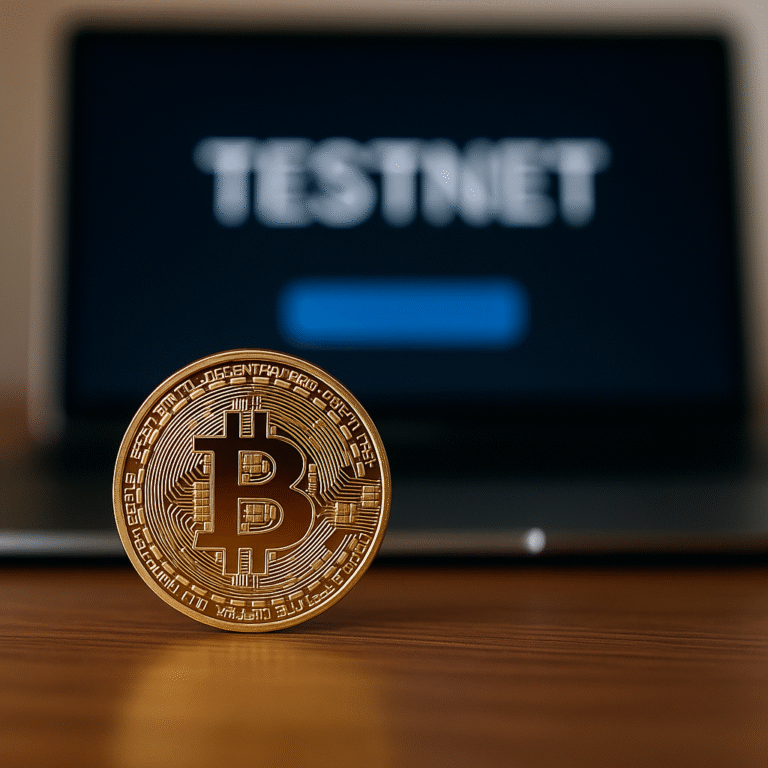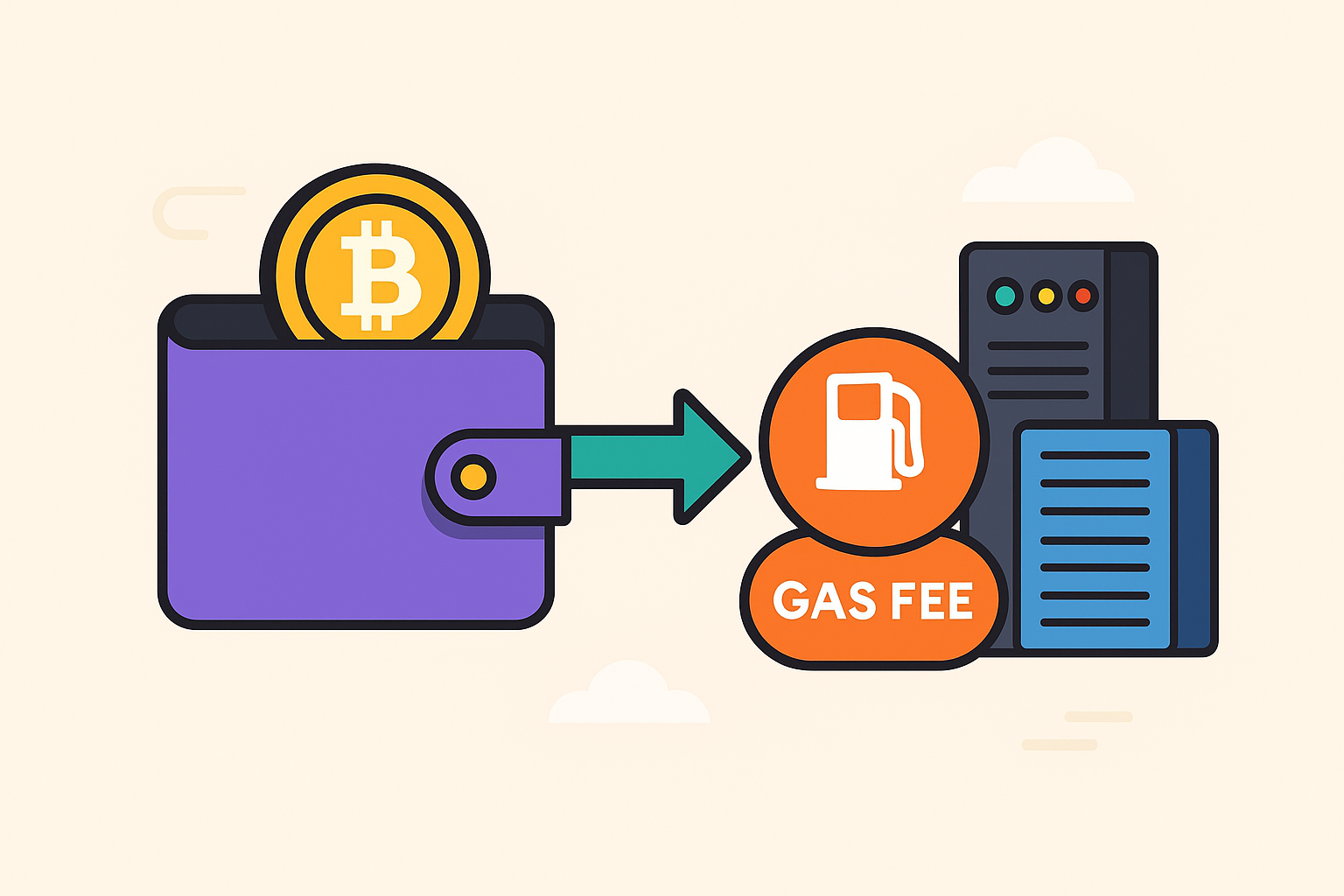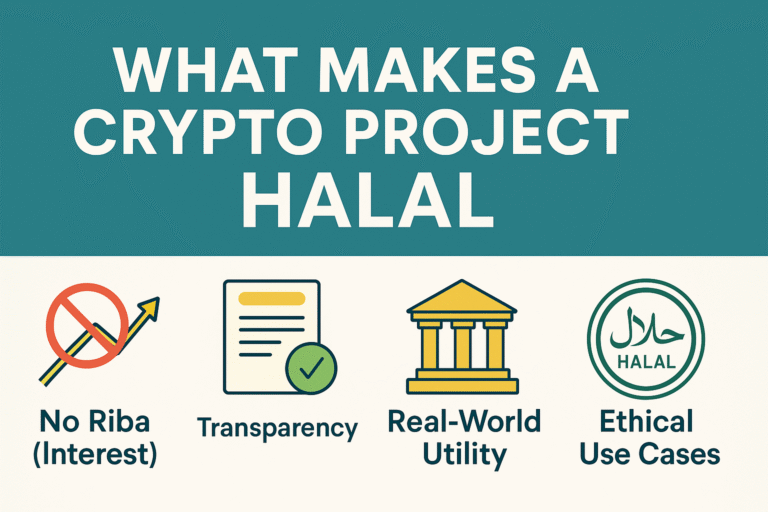Simple Explanation Of DeFi In Blockchain
Learn the simple explanation of DeFi in blockchain and how it lets you borrow, lend, and trade crypto without banks. Discover smart contracts, wallets, and how DeFi works for beginners in 2025.

Many people feel confused about decentralized finance and how it uses blockchain technology. Decentralized finance, or DeFi, lets you handle money online without a bank or broker involved. 2 This guide will break down key ideas like smart contracts, crypto wallets, and lending platforms in simple steps to help you learn fast. Keep reading to see how this new way of dealing with money could change your daily life. 1
Key Takeaways
- DeFi uses blockchain technology to let people manage money online without banks or brokers. Smart contracts automate transactions.
- Users can trade, borrow, lend and earn interest through DeFi platforms like Aave and Uniswap. These services are available 24/7 worldwide.
- No credit checks or paperwork is needed to start using DeFi, making it accessible from anywhere with an internet connection.
- Security risks include hackers exploiting smart contracts and market volatility affecting asset values. Users should be careful when choosing platforms.
- Popular DeFi applications include lending platforms, decentralized exchanges (DEXs), and yield farming for earning passive income.
What Is Decentralized Finance (DeFi)?

Simple Explanation Of DeFi In Blockchain
Moving from the basics, decentralized finance, or DeFi, creates a system where people use blockchain technology for direct financial services. No banks or brokers are needed here. Instead, users interact through decentralized applications and smart contracts on public blockchains like Ethereum.
These tools let anyone with internet access join in global peer-to-peer lending, borrowing, investing, and trading of digital assets. 1
DeFi platforms do not require a credit check to open an account. Users just need a crypto wallet with their seed phrase—no paperwork or ID checks like traditional banking systems demand.
This setup reduces costs and speeds up transactions since there is no middleman collecting fees. “Decentralized exchanges give you complete control over your crypto assets at any hour,” reflects the core vision of open finance that operates 24/7 worldwide.
Regulatory questions exist since these networks function outside national banking rules; still, millions now use DeFi tools daily to earn interest rates higher than many physical banks can offer. 2
Key Features of DeFi
DeFi runs on blockchain networks like Ethereum, using decentralized apps and smart contracts to provide financial services. You can send funds or use digital assets without banks or credit checks—just a crypto wallet and an internet connection open new ways to manage your money.
Peer-to-peer transactions
People can trade or exchange digital assets directly with each other using DeFi. These peer-to-peer transactions do not pass through banks or any centralized financial intermediaries like mortgage brokers, credit unions, or stock exchanges.
Instead, they use decentralized exchanges (DEXs) such as Uniswap and public blockchain networks powered by smart contracts. 3
Automated Market Makers (AMMs) support instant trades against liquidity pools instead of traditional order books. This means users swap tokens at current prices set by the pool’s underlying asset ratios—any time, day or night.
Key examples include trading ERC-20 cryptocurrency tokens on DeFi platforms and sending funds from one crypto wallet to another without extra approvals or password resets. With no third party controlling the process, transparency and efficiency increase for every transaction across distributed ledger technology systems like Ethereum Foundation’s network. 4
Elimination of intermediaries
DeFi uses blockchain technology and smart contracts to cut out financial intermediaries like banks or brokers. Instead of asking a bank to handle your funds, decentralized applications let users borrow, lend, trade digital assets, or join liquidity pools directly from their own crypto wallet.
Smart contracts run the code that automates these transactions on platforms such as Ethereum. With no middleman setting interest rates or taking fees at every stage, transaction costs drop and speed increases. 5
Removing third parties also means more control for users and less dependence on big firms like national financial services LLC or traditional investment firms such as FMR LLC. Anyone can access DeFi tools using a digital wallet—there’s no need for approval by legacy institutions or slow paperwork.
Flash loans, peer-to-peer lending, yield farming opportunities; all these activities become possible without waiting for someone else’s permission. This autonomy opens up new ways to manage investments and explore options in the global fintech space using web3 protocols.
24/7 availability
Cutting out intermediaries leads directly to constant access. No bank holidays, no closing times, and no wait for verification. These decentralized finance systems run on blockchain technology like Ethereum or Solana.
They never pause and do not sleep.
Users can connect through a crypto wallet at any hour, from anywhere in the world. Smart contracts power everything automatically—no owners or gatekeepers involved, just code that runs itself.
“DeFi is available 24/7 and does not need paperwork or approval,” says Vitalik Buterin, co-founder of Ethereum. 6
People use DeFi protocols for lending, borrowing, margin trading, and swapping digital assets—all day and night. This unbroken service creates room for global financial inclusion; it removes barriers seen in traditional banking hours or restricted markets.
Whether you are moving security tokens at midnight or staking coins for passive income in the afternoon, there is always open access—no downtime ever occurs since services rely on decentralized distributed ledger technology instead of local institutions or command-line schedules.
How Does DeFi Work?
DeFi runs on blockchain technology, using smart contracts to let people access financial services without a bank—discover how these digital agreements build trust and power new ways to manage your money.
Blockchain technology
Blockchain technology creates a public digital ledger that records every transaction. This system relies on distributed ledger technology, keeping data safe from tampering. Records stay transparent and secure through consensus algorithms like proof of stake.
Every block connects to the last one, making changes almost impossible to hide. 7
Ethereum and Solana use this blockchain structure to support smart contracts for decentralized finance platforms. These networks allow users worldwide to interact without banks or financial intermediaries.
Blockchain technologies power cryptocurrency exchanges, liquidity pools, and even prediction markets by letting people trade assets safely at any time. Crypto wallets let you access your digital assets directly on this decentralized blockchain infrastructure with no middleman involved.
Role of smart contracts
Smart contracts automate financial agreements and actions using blockchain technology. These self-executing programs run on platforms like Ethereum, with popular DeFi apps such as Aave, Compound, Uniswap, and SushiSwap relying on them every day. 8 Smart contracts reduce costs by cutting out middlemen like banks or brokers. This means anyone can borrow crypto assets from a liquidity pool or trade tokens on decentralized exchanges without filling out paper forms.
Everything works based on set rules that only activate if certain conditions are met. “Code is law in DeFi,” sums up their importance for automated services like lending and yield farming.
You get transparency because all transactions live on a public ledger where anyone can check them in real time. Trustless transactions mean you do not need to rely on another person; the code handles it all safely and efficiently around the clock.
Popular Applications of DeFi
DeFi offers tools like decentralized exchanges, lending platforms, and yield farming that help users earn passive income, trade digital assets, and explore new financial technology—stick around to see how these emerging services reshape how you manage your money.
Lending and borrowing platforms
Lending and borrowing platforms let you lend your digital assets to others or borrow from a pool, without a bank or middleman. You use a crypto wallet for access, send your funds into liquidity pools, and earn interest rates set by automatic smart contracts.
Aave and Compound are two popular examples that launched in 2017 and 2019. Lenders receive passive income while users who want to borrow must lock up extra collateral as security against their loan. 9
Interest rates change based on supply and demand. Security is high because every transaction is recorded on blockchain technology, letting anyone track the flow of funds at any time.
Governance tokens give you a voice in how these platforms grow and improve over time; holders can vote on changes directly through decentralized autonomous organizations. These financial services work all day, every day—no public holidays or closing hours—and offer freedom far beyond what traditional banks provide.
Decentralized exchanges (DEX)
Decentralized exchanges, or DEXs, allow users to trade digital assets like cryptocurrencies without using a middleman. These platforms use smart contracts on blockchain technology to make trades happen directly between people.
Popular options such as Uniswap and Sushiswap operate on the Ethereum blockchain and handle huge amounts of transactions. In Q1 2021 alone, DEXs processed $217 billion in trades. 10
Every transaction on a DEX is recorded in real time with distributed ledger technology, making trading transparent and secure for everyone involved. People can connect their crypto wallets or digital wallets straight to these applications and start swapping coins at any hour of the day.
Liquidity pools help keep the market active so users get fair interest rates when buying or selling tokens. This approach supports financial inclusion by letting anyone with an internet connection access decentralized financial services like derivatives trading, liquidity mining, and more—all from their own device.
Yield farming and staking
Yield farming lets crypto holders lend or stake digital assets to earn rewards. These users, called liquidity providers, add their coins to liquidity pools on decentralized exchanges or lending platforms like Uniswap and Aave.
These smart contracts then pay out passive income in the form of interest rates or extra tokens. Many find that DeFi yield farming offers higher annual percentage rates than any traditional savings account. 11
Staking works a bit differently but also grows your wealth. You lock up your digital assets, often in proof-of-stake blockchains such as Ethereum 2 (Eth2). The network uses your staked crypto to keep itself secure.
In return, you receive more tokens over time. Risks exist with both methods; one main risk is impermanent loss when asset values shift quickly inside liquidity pools.
In 2023, some DeFi protocols offered double-digit interest rates compared to less than 1% for many US bank accounts. 12
Benefits of DeFi
Decentralized finance uses blockchain technology and smart contracts to open access to financial services for more people—right from their digital wallets. Users can join liquidity pools, earn passive income through yield farming, or manage crypto assets on decentralized exchanges…all while enjoying lower barriers and increased transparency.
Accessibility
Anyone with a smartphone and internet connection can use decentralized finance. Traditional banks often set barriers such as credit checks or paperwork. In contrast, DeFi platforms remove these limits and allow global access using just a digital wallet.
Users keep full control over their digital assets without needing approval from big financial intermediaries. 13
A farmer in India, a coder in Brazil, or a student in Kenya can join liquidity pools and earn passive income through yield farming straight from their phones. There are no closed hours; these decentralized applications run 24/7 on blockchain technology.
No need to share personal details—DeFi keeps users pseudonymous while welcoming anyone into the global financial system. 13
Transparency
All DeFi transactions stay open for everyone to see on the blockchain. 14 Think of each move, from a crypto wallet swap to smart contracts in action, as being pinned up on a giant public board.
This means anyone can check interest rates offered by lending and borrowing platforms or review how liquidity pools operate at any time. 3
Everything runs through smart contracts which record terms and results directly onto the distributed ledger technology used by protocols like Ethereum. Users do not need a bank or financial intermediary to verify deal details.
Platforms such as decentralized exchanges show trade histories live, making it easy to track asset flows and fees. Open records make risk management much easier and cut down chances for manipulation or fraud, building trust in emerging technology across digital assets markets.
Lower transaction costs
Greater transparency in decentralized finance helps users see exactly where their money goes. This clear view leads to another big benefit, which is lower transaction costs. DeFi platforms remove most financial intermediaries like banks or brokers.
Without these middlemen, there are no extra fees added on top of each service. 5
Peer-to-peer transactions let people trade digital assets directly through decentralized exchanges such as Uniswap and Aave. Smart contracts handle trades automatically based on set rules, cutting out paperwork and delays.
These features keep transaction fees much lower than those seen at regular banks or traditional crypto exchanges. In 2024, DeFi protocols often charge only a few dollars per move compared to fee structures that can reach tens or hundreds elsewhere.
As more people use distributed ledger technology for everyday payments and investing, expect even more savings across liquidity pools and lending platforms in the future. 15
Risks and Challenges in DeFi
Hackers can exploit bugs in smart contracts or steal digital assets from a crypto wallet, causing losses for users. Fast price swings and weak risk management tools make it hard to protect your money on decentralized exchanges or lending apps—always double-check platforms before using them.
Security vulnerabilities
Security vulnerabilities hit DeFi hard, with losses growing fast as the technology spreads. In April 2022, the total value locked in decentralized finance dropped from $200 billion to only $80 billion by July 2022. 16 Weaknesses show up on two main levels: blockchain layer flaws and application-level bugs. Faulty smart contracts often open doors for theft, especially during flash loans or when digital assets move through liquidity pools.
Password mistakes or wallet errors also lead to lost funds.
Real-world attacks have damaged trust in many projects, forcing teams to rethink security strategies and risk management tools. As you explore other risks like market volatility, strong protection of your crypto wallets should remain a top priority. 16
Market volatility
Market volatility can quickly change the value of digital assets in decentralized finance. Rapid price swings often hit liquidity pools on decentralized exchanges (DEXs).17 During these times, users might face slippage or even lose funds.
DeFi protocols sometimes find it hard to keep enough liquidity in fast-moving markets.
Frequent and large changes in interest rates impact lending and borrowing platforms using blockchain technology. Flash loans grow riskier when asset prices spike or drop without warning.
This high volatility increases risks for smart contracts, governance tokens, and passive income strategies like yield farming or staking. Investors should always use strong risk management tools and stay aware of shifts across digital wallets and distributed ledger technology platforms during uncertain conditions.
Conclusion
DeFi changes how people access financial services by using blockchain technology and smart contracts. Anyone with a crypto wallet can join in, trade digital assets, or try yield farming for passive income.
This new approach to finance brings freedom and lower costs, yet users must stay alert to security risks and market swings. As more platforms appear, DeFi keeps growing fast—offering new ways to earn interest rates or take part in decentralized exchanges without banks or brokers!
FAQs
1. What is decentralized finance (DeFi) in blockchain technology?
Decentralized finance, or DeFi, is an emerging technology that uses blockchain and smart contracts to provide financial services without the need for traditional financial intermediaries. It allows people to lend, borrow, trade and earn interest on digital assets through decentralized exchanges.
2. How do smart contracts play a role in DeFi?
Smart contracts are self-executing agreements with the terms of the contract directly written into lines of code. They form the backbone of DeFi by automating transactions and ensuring compliance without needing a third party.
3. Could you explain yield farming in simple terms?
Yield farming is essentially lending your crypto assets to others via liquidity pools on decentralized exchanges (DEXs). In return, you can earn passive income from interest rates set by supply and demand dynamics within these markets.
4. What kind of benefits does DeFi offer over traditional banking?
DeFi offers several advantages such as increased access to financial services for those who are unbanked or underbanked; it also provides opportunities for earning passive income through yield farming or staking digital assets.
5. Are there any risks involved with using DeFi platforms?
Yes, like any other investment opportunity, there are risks associated with using DeFi platforms including impermanent loss due to price volatility of digital assets and potential security issues related to smart contracts or crypto wallets.
6. Can I use my electronic cash for investing in DeFI projects?
Absolutely! You can convert your electronic cash into digital assets like cryptocurrencies which then can be used as collateral for loans or invested in various ways within the ecosystem – including yield farming and purchasing synthetic assets.
References
- ^ https://www.coinbase.com/learn/crypto-basics/what-is-defi
- ^ https://www.fidelity.com/learning-center/trading-investing/crypto/decentralized-finance-defined
- ^ https://www.blockpit.io/blog/what-is-defi-decentralized-finance
- ^ https://hedera.com/learning/decentralized-finance/what-is-decentralized-finance
- ^ https://www.investopedia.com/decentralized-finance-defi-5113835 (2024-10-25)
- ^ https://codora.io/what-is-defi-and-why-does-it-matter-defi-is-available-24-7/ (2024-08-27)
- ^ https://www.kraken.com/learn/how-does-defi-work
- ^ https://www.rapidinnovation.io/post/smart-contracts-and-defi-transforming-decentralized-finance
- ^ https://rocknblock.io/blog/defi-lending-and-borrowing-platform-development-explained (2024-09-30)
- ^ https://www.coinbase.com/learn/crypto-basics/what-is-a-dex
- ^ https://cointelegraph.com/explained/defi-yield-farming-explained (2025-03-11)
- ^ https://hedera.com/learning/decentralized-finance/defi-yield-farming
- ^ https://www.blockpit.io/en-us/blog/what-is-defi-decentralized-finance (2025-03-10)
- ^ https://blocktelegraph.io/how-defi-enhances-transparency-in-transactions/
- ^ https://www.onesafe.io/blog/what-is-defi-guide-to-decentralized-finance
- ^ https://www.sciencedirect.com/science/article/pii/S1319157822003792
- ^ https://www.researchgate.net/publication/386036397_Risks_of_decentralized_finance_and_their_potential_negative_effects_on_capital_markets_the_Terra-Luna_case






